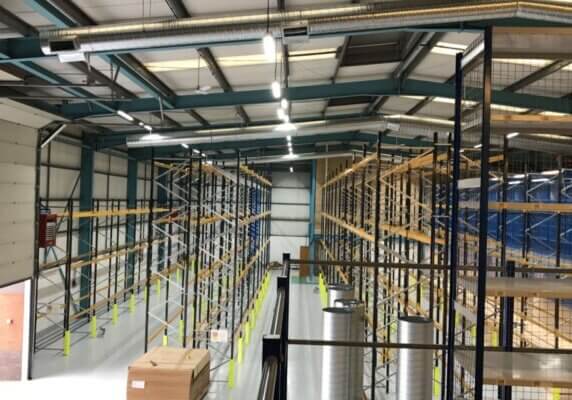Air Technology Systems worked with our client, in the Energy from Waste market, to manage their Industrial Ventilation issues at their new facility.
Client
A leading organisation in Engineering & Manufacturing for the Pharmaceutical & Medical Industry.
Project Scope & Objectives
We were discussing several challenges with our client that needed addressing on their new Biomass EfW facility and had already installed a Cyclone Dust Extraction System, to address the dust problems associated with handling wood chip biomass.
The decision had been made that the feedstock for the facility was going be changing from biomass (wood chip) to Refuse Derived Fuel (RDF). This presented other issues that needed to be considered because the new fuel type, derived from waste, could potentially be odorous.
Collaborating with the Client, we proposed a design for this issue, proceeding to supply, install, and commission the systems.
Challenges
- Contain & treat the air within the Fuel Reception Building (FRB)
- Reduce the potential for fugitive emissions to escape the FRB
- Incorporate the requirements of the client’s gasification process
Solution
The simplest way of treating the odorous air from the FRB was to direct that air volume to the gasifiers that were part of the EfW facility.
We designed a ventilation system that would extract the air from the FRB and transfer it to the air intake for the gasifiers.
In addition to the extract system, we installed their innovative Industrial Ventilation supply system which contributed two key functions:
- Minimise the potential for escape of odours – high velocity nozzles ware arranged above and around the vehicle doors to ‘push’ air toward the rear wall of the building.
- Maximise the effective capture of the odours – the extraction ductwork is positioned on the rear wall of the building and works in conjunction with the Industrial Ventilation ‘pushed’ air volume, to ‘pull’ the air into the extract ductwork system.
The nature of the air within the FRB was unknown, however, since it could be aggressive, and that and the proximity of the site is only 5km from the coast (saline environment), we installed plastic ductwork which has excellent corrosion resistance:
- Industrial Ventilation supply system – uPVC
- Extract / transfer system – uPVC and uPVC/GRP wrapped
We provided full integration and communication of the various system control panels and instrumentation with the site BMS.
In addition to the above, the Client asked Air Technology Systems to liaise and organise the other aspects of work that were also recommended as part of the solution, these included:
- Installation of fast acting doors on the FRB
- Installation of a misting system within the FRB – both dust suppression & odour control systems
- Installation of full height curtains to separate the building into clean (no dust) and dirty (dusty) areas
- Various modifications to the original building to ensure that the new system would operate effectively.
Result
Air Technology Systems and our Client worked on a collaborative basis to develop the systems and ductwork designs that would result in effective solutions for the potential problems that can arise on an EfW site, ensuring that the Client would meet their planning requirements.
ATS Plastics Capabilities
The plastic ductwork for projects such as this can all be fabricated by ATS Plastics; we have full in-house capabilities with high specification manufacturing equipment to ensure we can fabricate big quantities of ductwork of any size efficiently and to a high-quality standard.
All plastic ductwork associated with this project ranged from 400dia to 1200dia including fittings such as bespoke transition pieces, non-return dampers, isolation dampers and actuated dampers. The external ductwork was GRP wrapped for 2 reasons:
- Structural integrity as the duct was 1200 dia
- Provide UV protection which can age and speed up the process of the ductwork becoming brittle from the temperature abuse of the UK weather.
With the ductwork being GRP, wrapped it meant the client could select the colour of the ductwork they wanted to fit either with their planning permission requirements or to fit in with the aesthetics of the site.





























